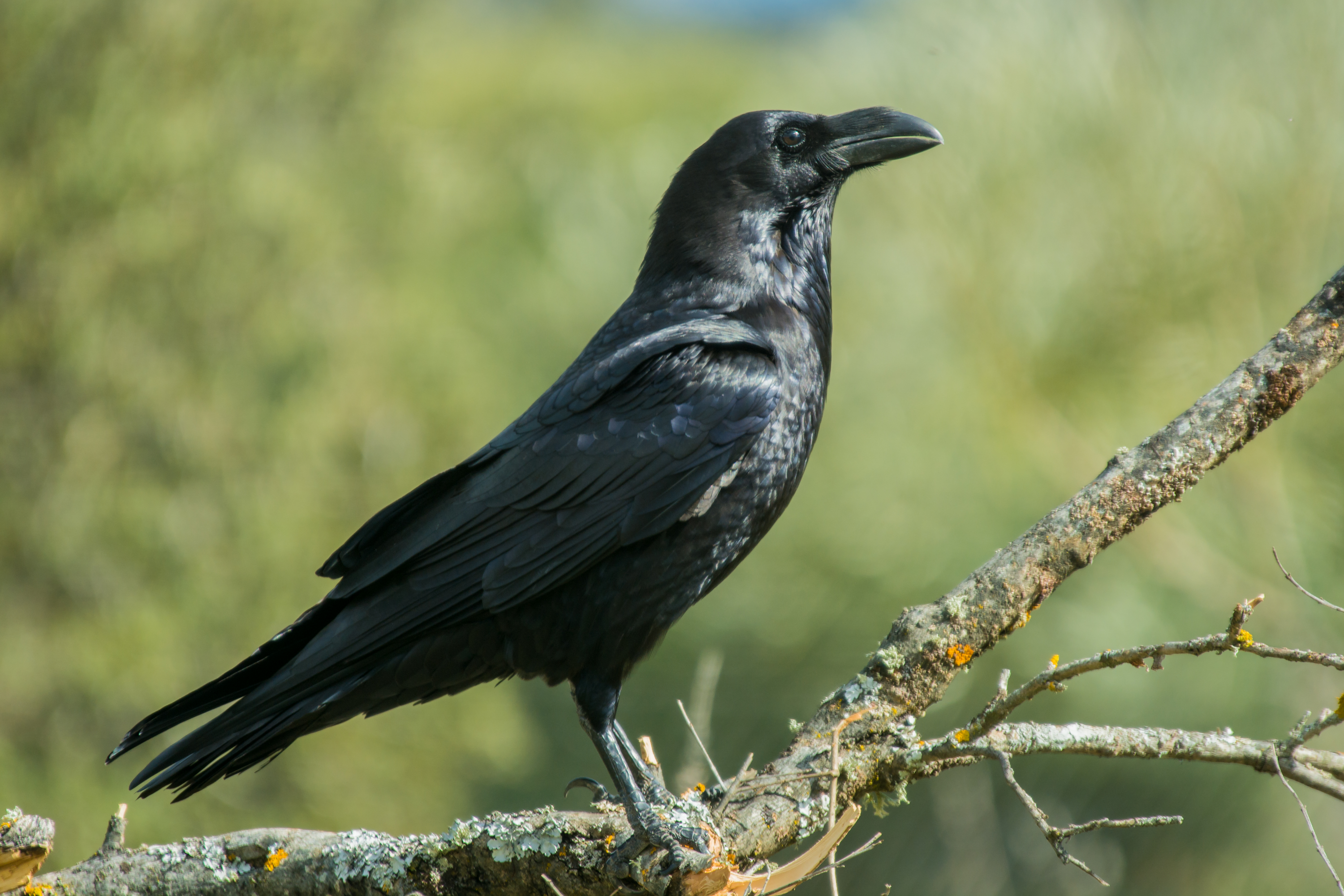Jamaican crow
(Corvus jamaicensis)

Description
The Jamaican crow (Corvus jamaicensis) is a comparatively small corvid (35–38 cm in length). It shares several key morphological features with two other West Indian species, the Cuban crow (Corvus nasicus) and the white-necked crow (Corvus leucognaphalus) of Hispaniola, which are very closely related to it. As its name suggests, this species is found on the island of Jamaica, where it inhabits woodland mixed with cleared areas, and can be frequently found in larger gardens. Though primarily a bird of hill and mountain forest, it comes down to lower elevations during the dry season, where it is more likely to be seen. The overall appearance is sooty-grey, not at all glossy, like its relatives; though it does possess a similar dark grey patch of naked skin just behind the eye, and a smaller naked patch at the base of the bill. The bill itself is slate-grey and quite deep, tapering to a sharp point. The nasal bristles are relatively sparse usually leaving the nostrils on view. The iris is either grey-brown or red-brown, possibly depending on age. The legs and feet are black. A forest crow by nature, its food requirements contain a significant proportion of fruit taken from trees, either in pairs or small groups. It also probes under bark and leaf litter for small invertebrates and lizards, and it is known to raid other birds nests of both eggs and nestlings. The nest itself is usually built in tall trees; this species may also use tree holes as a possible nesting option, although not yet recorded for this species and its breeding habits. The voice, like its two nearest relatives, is very distinctive and consists of various jabbering and bubbling sounds (thus its common Jamaican Patois name, jabbering crow), but also a more leisurely “craaa-aa” and variations thereof, and somewhat of a musical burbling. Corvus is a widely distributed genus of medium-sized to large birds in the family Corvidae. It includes species commonly known as crows, ravens and rooks. The species commonly encountered in Europe are the carrion crow, the hooded crow, the common raven, the jackdaw and the rook; those discovered later were named "crow" or "raven" chiefly on the basis of their size, crows generally being smaller. The genus name is Latin for "crow". The 45 or so members of this genus occur on all temperate continents except South America, and several islands. The Corvus genus makes up a third of the species in the family Corvidae.
Taxonomic tree:







